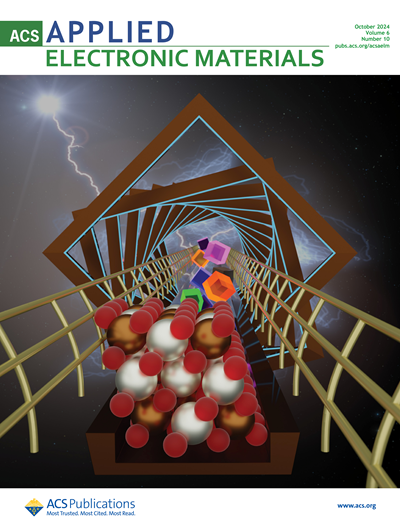镉和锌在两种埃及栽培品种(S53 和 V120)中的积累和耐受性,可作为潜在的植物修复剂。
IF 4.7
3区 材料科学
Q1 ENGINEERING, ELECTRICAL & ELECTRONIC
引用次数: 0
摘要
向日葵(Helianthus annuus L.)是世界上最重要的油料作物之一,被认为有助于土壤植物修复。重金属(HM)污染是可能影响向日葵这种重要作物的生长和产量的最大非生物挑战之一。我们研究了埃及向日葵的两个栽培品种(V120 和 S53)在重金属污染土壤中对金属平衡的影响以及潜在的超耐受机制。在镉和锌/镉处理过程中,这两种向日葵根部积累的镉浓度明显高于芽部。V120 植物根部的镉浓度较高,分别为 121 毫克/克(干重)和 125 毫克/克(干重),而 S53 植物根部的镉浓度相对较低,分别为 111 毫克/克(干重)和 105 毫克/克(干重)。镉污染明显提高了 V120 植物芽中重金属 ATP 酶(HaHMA4)的表达。另一方面,其根部的 HaHMA3 表达量明显增加。这项研究表明,V120 植物在根部积累并固着镉。因此,建议在重金属污染地区种植 V120 栽培品种,因为它是一种很有前景的镉植物修复剂。本文章由计算机程序翻译,如有差异,请以英文原文为准。
Cadmium and zinc accumulation and tolerance in two Egyptian cultivars (S53 and V120) of Helianthus annuus L. as potential phytoremediator.
One of the most important oil crops in the world, sunflower (Helianthus annuus L.), is recognized to help in soil phytoremediation. Heavy metal (HM) contamination is one of the most abiotic challenges that may affect the growth and productivity of such an important crop plant. We studied the influence of HM-contaminated soils on metal homeostasis and the potential hypertolerance mechanisms in two sunflower Egyptian cultivars (V120 and S53). Both cultivars accumulated significantly higher cadmium concentrations in their roots compared to their shoots during Cd and Zn/Cd treatments. Higher root concentrations of 121 mg g-1 dry weight (DW) and 125 mg g-1 DW were measured in V120 plants compared to relatively lower values of 111 mg g-1 DW and 105 mg g-1 DW in the roots of S53 plants, respectively. Cadmium contamination significantly upregulated the expression of heavy metal ATPases (HaHMA4) in the shoots of V120 plants. On the other hand, their roots displayed a notable expression of HaHMA3. This study indicates that V120 plants accumulated and sequestered Cd in their roots. Therefore, it is advised to cultivate the V120 cultivar in areas contaminated with heavy metals as it is a promising Cd phytoremediator.
求助全文
通过发布文献求助,成功后即可免费获取论文全文。
去求助
来源期刊

ACS Applied Electronic Materials
Multiple-
CiteScore
7.20
自引率
4.30%
发文量
567
期刊介绍:
ACS Applied Electronic Materials is an interdisciplinary journal publishing original research covering all aspects of electronic materials. The journal is devoted to reports of new and original experimental and theoretical research of an applied nature that integrate knowledge in the areas of materials science, engineering, optics, physics, and chemistry into important applications of electronic materials. Sample research topics that span the journal's scope are inorganic, organic, ionic and polymeric materials with properties that include conducting, semiconducting, superconducting, insulating, dielectric, magnetic, optoelectronic, piezoelectric, ferroelectric and thermoelectric.
Indexed/Abstracted:
Web of Science SCIE
Scopus
CAS
INSPEC
Portico
 求助内容:
求助内容: 应助结果提醒方式:
应助结果提醒方式:


